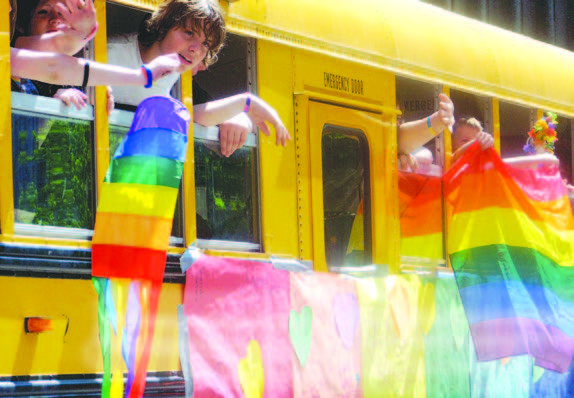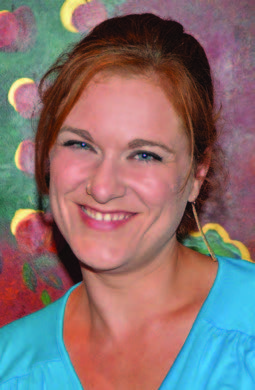
(Editor’s Note: Teacher Lyndsey Schlax of the Ruth Asawa San Francisco School of the Arts launched the nation’s first on-site high school LGBT course in 2015. She has just resumed teaching that groundbreaking class. In this column her students share their thoughts about LGBT-related matters, including their concerns, what they have learned in class and more.)
LGBTQ in Big Cities
Student, Grade 10
As a student living in San Francisco, attending a school with a high percentage of LGBTQ youth, and witnessing a lot more people with love for the community rather than hate, I can truly say that I belong to an LGBTQ supportive community (for the most part, of course).
However, living here in San Francisco my whole life, I have begun to wonder what it really is like elsewhere. Does San Francisco have the most LGBTQ-identified students of the big cities? What about the youth? It turns out that San Francisco indeed has the largest LGBTQ percentage of the big cities at 6.2%. Next up is Portland, at a close 5.4%, then New York at 4%. The question, though, really is: what do these numbers mean? Are New York and San Francisco really on par with the acceptance of LGBTQ people, and youth especially?
The answer to this is subjective, and quite tricky to answer, but it seems that all across the nation, cities are doing their best to improve life for LGBTQ students. The fact that I am writing this as part of my LGBTQ studies class itself is proof. In New York City, the education department has just hosted their first LGBT pride celebration for city schools. Portland is opening subsidized housing programs for homeless LGBTQ youth.
I suppose, for now, it looks like we can look forward to a better, more understanding community, and a safer community for generations of LGBTQ students.
Relearning Allyship
Student, Grade 12
In the 4th grade, as a class assignment we had to write a letter to the newly elected President Obama. I didn’t have to think hard about my topic because that was the year that I found out same-sex marriage was illegal in the U.S. I was absolutely dumbfounded by this law, so I wrote my letter asking the president to please legalize gay marriage.
Being born and raised in the diverse environment of San Francisco, I have always been surrounded by a number of family friends who identified with the LGBTQ community. I never questioned that a relationship that didn’t parallel my mommy and daddy’s was anything less than true love. But this week, in LGBTQ Ethnic Studies class, I learned something that knocked me on my privileged ass: what being an ally truly means.
Since I wrote that letter to Obama, I have been silent too much. I have stayed silent when “that’s so gay” is thrown around the classroom. I have validated my lack of action with my good intention. I have spoken up as many times as I have not. I have been a bystander, and that is not true allyship. Exploring what it means to be an ally was extremely eye opening to me; about myself, how much I do not know, and how I can appropriately involve myself more. I vow to do more, to be more, to speak up more, and to use the privilege I carry with me to amplify the voices of those who are marginalized.
Undertones and Visuals
Student, Grade 12
In our LGBTQ studies class, we watched a film called The Celluloid Closet, directed by Rob Epstein and Jeffrey Friedman. The film was about the representation of gay men and lesbian women in film throughout the years. The ideas in this film made a lot sense to me. The documentary talked about how, in old films, they could not explicitly show gay people so they had to do so through subtext.
A lot of people in my class talked about how they never saw these undertones in films before, but for me it was the opposite. I have noticed the LGBTQ undertones in film, especially because I am student in the Asawa SOTA Media department, which is basically the study of film.
From my first year in the 9th grade, I was taught how to analyze every single aspect of film. When making a film, a large portion of your story is told through visual concepts that create subtext. Because of my film education I have personally been viewing films this way for a long time. The Celluloid Closet made me think a lot about how about much I appreciate and respect the craft of film-making and how film can tell a whole story without even mentioning it.

For more information about the Ruth Asawa San Francisco School of the Arts, please visit http://www.sfsota.org/
Recent Comments